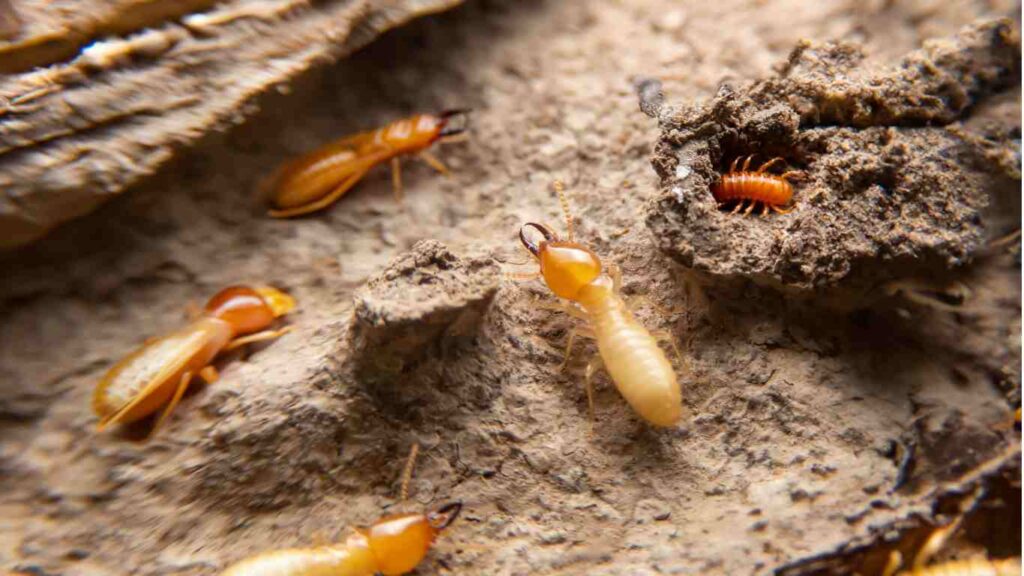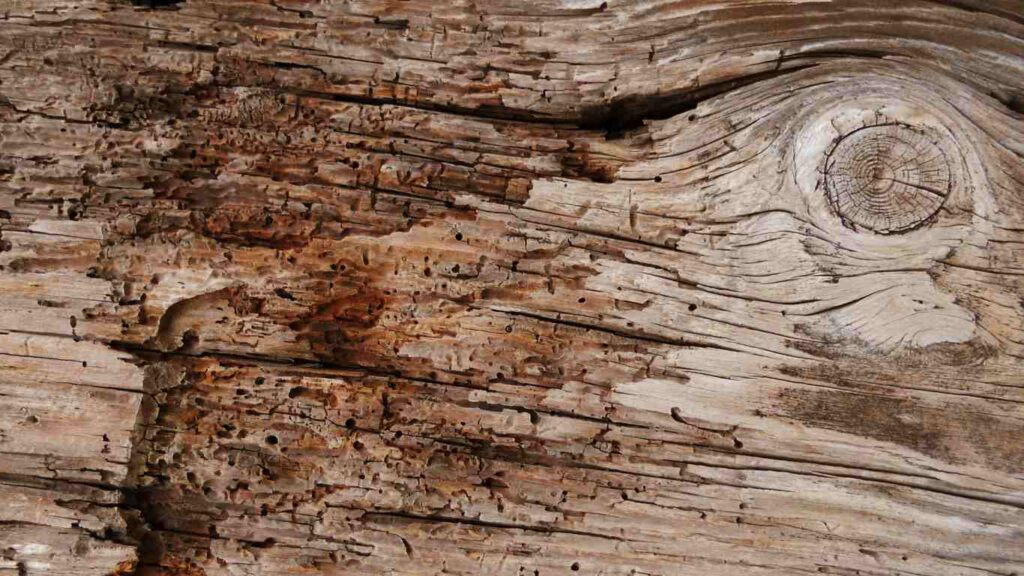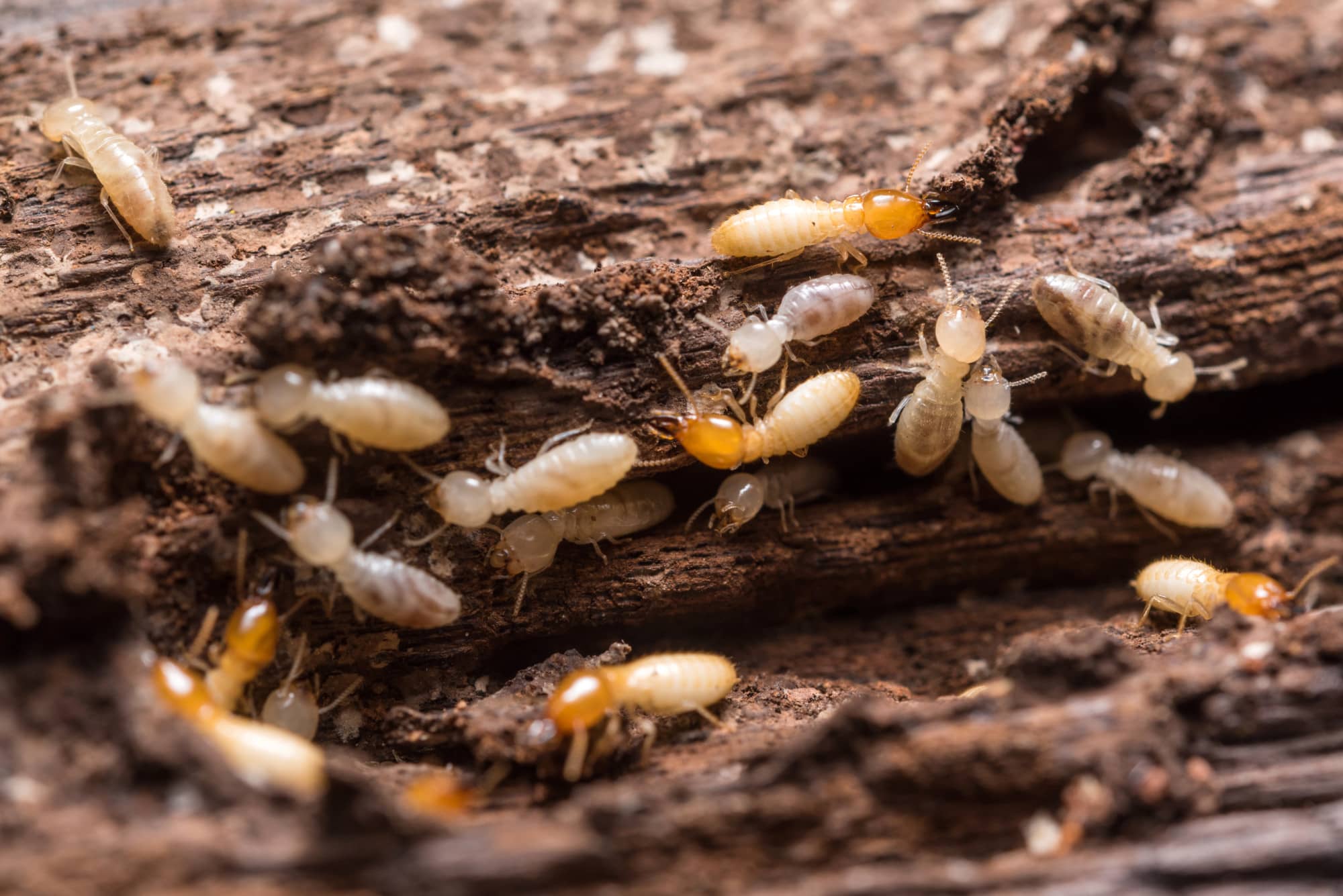Every home offers lodging to a few pests. A few spiders might inhabit your attic or a couple of flies might find their way into your basement. Yet, few things cause dread in a homeowner like termite problems.
It’s a well-justified dread at that. Termite damage causes an estimated $5 billion in annual damage. For a little comparison, all of the winter storm damage in 2019 came in at a little over $6 billion.
That level of annual destruction raises a reasonable question. What do termites do to a home?
If you’re a homeowner asking that question, keep reading for our guide about termites and what they do.

Types of Termites
There are numerous species of termites. For the homeowner, however, there are three main types of termites you should worry about.
Drywood
Drywood termites typically attack sound wood that remains dry. Think structural lumber like a 2×4 or a dead limb on a tree. Drywood termites can eat with or across the grain.
Dampwood
Dampwood termites typically attack decayed wood. Think of a rotted out tree stump or a fallen limb that’s settled into damp soil.
Subterranean
Subterranean termites form colonies underground and eat up into wood close to the soil. Fallen trees are a common target, but so it siding and other home building wood situated close to the ground. Subterranean termites eat along the grain of the wood.
What Do Termites Do to a House?
Termites, quite literally, eat the wood in your home. Termite’s digestive systems include bacteria and enzymes that let them break down the wood and get at the cellulose. Cellulose is the main component in plant cell walls.
The termites can extract the nutrition they need to survive from the cellulose.
Structural Wood Damage
Most homes have structural wood near the ground, such as floor joists. These pieces of structural wood offer a lot of temptation to subterranean termites that stick near to the soil.
This type of termite damage proves hard to predict or detect. You can’t know when a termite colony forms in the soil near or even under you home. So, most homeowners don’t realize the threat for some time.
Subterranean termites often form very large colonies compared to dry wood or dampwood termites. That means they eat tunnels into the wood faster than other termites. It also means your structural wood gets increasingly weaker the longer the infestation remains.
The damage often proves very costly for the homeowner. Due to the wood’s location and function, safely replacing it is a complicated proposition.
Siding and Interior Wood Damage
Widing and interior wood, such as 2x4s inside your walls, offer a big tasty meal for dry wood termites. Much like subterranean termites, dry wood termites will tunnel through your siding and interior wood.
If the infestation continues unabated, the wood will become increasingly fragile. Thinner wood with extensive damage may crumble away. Thicker wood may develop hollowed out areas that weaken the wood.
While the loss of siding doesn’t threaten the structural integrity of your home, replacing it can get expensive. Damage lumber in your walls can threaten the integrity of your home.
Again, it’s also a difficult repair. It can take extensive drywall removal to identify and replace all the damaged wood in your walls. That means new drywall and a fresh round of painting.
Furniture and Floor Damage
Drywood termites will also infest wood flooring or even wood furniture. You’ll probably spot signs of termite activity, discussed below, in flooring or furniture.

Spotting Signs of Termites
Termites swarm during the warmer weather. Most types of subterranean termites prefer spring and early summer. Drywood species typically swarm later in the summer or during the fall.
You can tell them apart from swarming ants because termites have equal-sized front and back wings. Ants grow larger front wings. If you see termites swarming near or around your home, you should strongly consider a professional inspection.
Of course, most people don’t enjoy the luxury of spotting the swarm. Instead, they find evidence of an active infestation. There are many signs you watch out for that will alert you to an infestation.
Frass
Drywood termites leave behind droppings called frass. These dropping can look like dark, very fine sawdust around a tunnel hole. It will also show up as dark streaks on walls when a termite chews through the drywall.
Mud Tunnels
Subterranean termites will often access wood near the ground by building mud tunnels up the foundation. These tubes are often only a quarter-inch wide.
Beneath a house, subterranean termites will sometimes build a more substantial structure called a drop tube. These tubes are mostly freestanding and connect the ground to a joist.
Wood Damage
Another common sign of a termite infestation is wood damage on the exterior of your home. You might notice small holes eaten into siding, window frames, or door frames.
Dealing with a Termite Infestation
Skilled homeowners can DIY solutions for many common problems in their homes. A termite infestation is not one of the problems. You will need a professional pest control company for an assessment and the right management solutions.
Depending on the kind and extent of the infestation, there are several potential solutions, such as:
- Liquid termiticide at the colony
- Full-home fumigation
- Termiticide sprays and foams
Long-term management might involve baiting and barrier options that help kill or drive away termites that come close to your home.
Don’t Let Termites Wreck Your Home
What do termites do? They can eat you out of your home if you let them.
You have two main options available that will keep your home intact. You can maintain a vigilant eye for termites or signs of them. You can also hire professionals for inspections and management options.
A good pest control company can take some preventative measures and actively destroy any current infestations.
Schedule a Termite Inspection Today
Official Pest Prevention is a family-owned, licensed pest control company celebrating 20 years serving over 100,000 satisfied customers in five area codes throughout Northern and Central California. Starting with a few contacts, and only four full-time employees, our small company has grown into an organization that today employs over 100 people, maintains a fleet of 75 vehicles, and has serviced over 100,000 Northern California households. This tremendous growth has come from loyal customers, who have recommended our work to their friends, family, and neighbors.
We are a full-service pest control company. Whatever your pest problem, we have a solution. Our goal is to make your property pest-free. Guaranteed. Contact us online or by phone (877) 711 2847 – for immediate assistance. Same-day bookings and flexible payment plans available – because pest invasions wait for no one.



